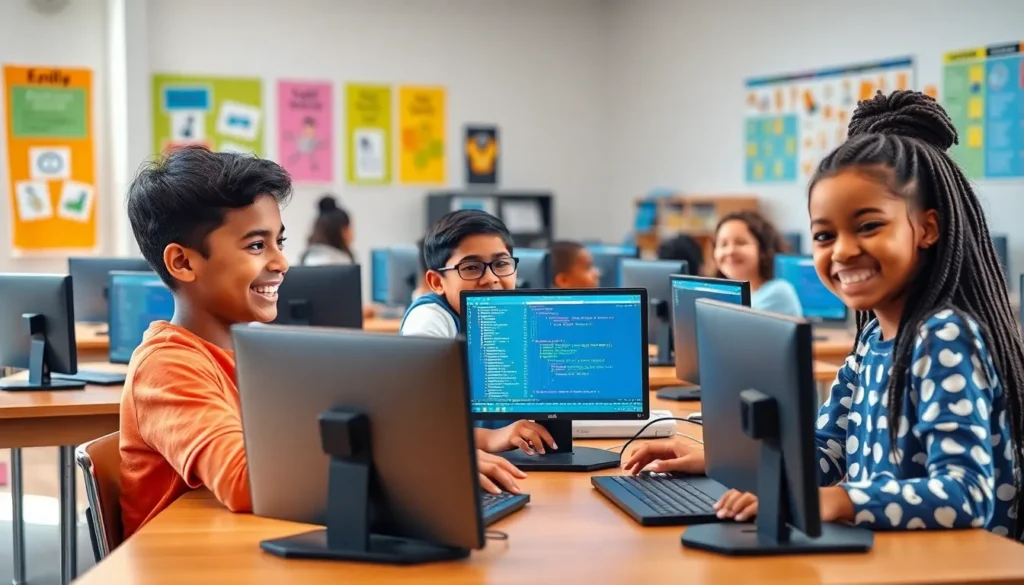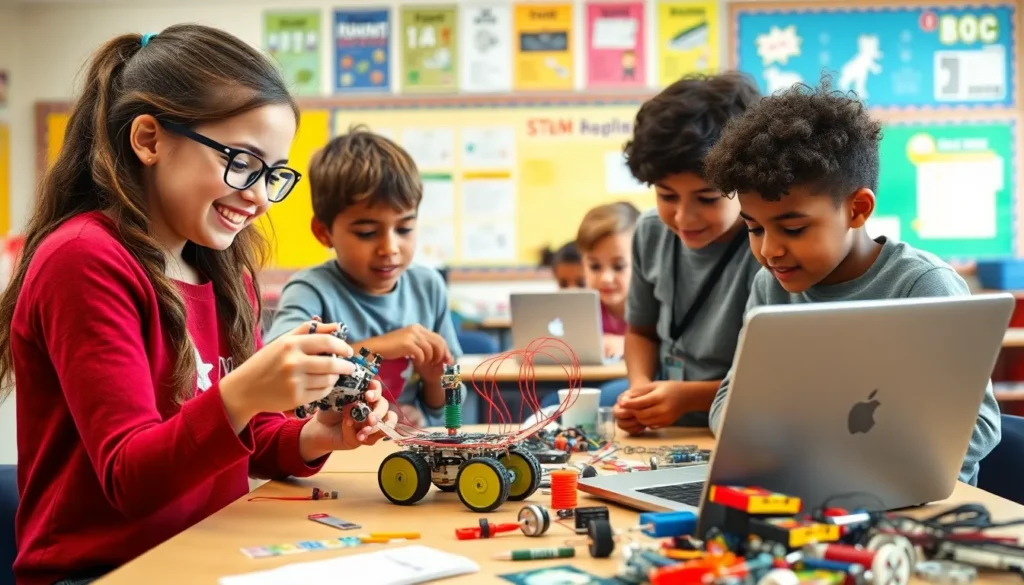Table of Contents
ToggleIn a world where coding skills can unlock doors to endless opportunities, homeschooling parents are discovering the magic of coding classes. Why let kids get lost in endless hours of video games when they could be creating their own? With homeschool coding classes, they’ll not only learn to code but also unleash their inner tech wizard.
Imagine your child transforming from a passive consumer of technology to an active creator. These classes make learning fun and engaging, turning complex concepts into exciting projects. Plus, who wouldn’t want to brag about their kid’s ability to build a website or design a game? It’s like giving them a superpower—minus the cape, of course! So, let’s dive into the world of homeschool coding and discover how it can turn your living room into a hub of innovation.
Overview of Homeschool Coding Classes
Homeschool coding classes provide a flexible and tailored approach to learning programming skills. These classes enable students to explore various coding languages and technologies at their own pace. Many programs focus on practical applications, such as game design and web development, fostering creativity alongside technical skills.
Interactive online platforms often offer coding courses for different age groups. This accessibility allows families to choose options that fit their schedules and learning styles. Live sessions enhance engagement, enabling students to collaborate with peers and instructors in real-time.
Project-based learning distinguishes many homeschool coding classes. Students actively create projects, enhancing their problem-solving abilities and reinforcing concepts learned throughout their coursework. Completing projects offers tangible outcomes, leading to increased confidence and motivation.
Parents benefit from various resources that support the integration of coding into their homeschool curriculum. Online tutorials, coding kits, and community forums provide additional guidance. These resources ensure that parents feel equipped to accompany their children through the learning process.
In addition, homeschool coding classes promote essential skills that extend beyond programming. Critical thinking, collaboration, and communication skills develop as students navigate challenges together. Exciting project outcomes serve as milestones, showcasing the students’ progress and accomplishments.
Diverse coding languages, including Python, JavaScript, and Scratch, offer a variety of learning opportunities. Each language presents unique aspects, catering to different interests and career paths in technology. This diverse exposure equips students with foundational skills applicable to various fields.
Homeschool coding classes not only teach technical skills but also inspire innovation. Children learning to code can express their ideas creatively, gaining the ability to turn concepts into reality. Encouraging this innovative mindset prepares them for future opportunities in an increasingly digital world.
Benefits of Homeschool Coding Classes

Homeschool coding classes offer valuable educational advantages that enhance children’s learning experiences.
Flexibility in Learning
Flexibility in learning allows children to progress at their own pace. This adaptive approach accommodates different learning styles and schedules. Students explore various topics during classes and can choose when to dive deeper into specific subjects. For example, a child interested in game development can spend extra time mastering relevant skills. Self-directed learning fosters independence and cultivates a sense of ownership over education, promoting intrinsic motivation. Moreover, families can adjust class hours and routines to fit their needs, making education a seamless part of daily life.
Personalized Curriculum
Personalized curriculum ensures that each student receives tailored instruction based on their unique interests and abilities. Children engage in projects that resonate with their passions, leading to greater enthusiasm for learning. Instructors can modify lesson plans and assignments to challenge advanced students while providing additional support where necessary. For instance, a student might focus on Python for a data science project while another tackles Scratch for creating interactive animations. This customization helps keep learners motivated, fosters creativity, and facilitates meaningful skill development.
Popular Homeschool Coding Programs
Numerous homeschool coding programs cater to various skill levels, interests, and learning styles. Each program offers unique features designed to engage students as they develop essential coding skills.
Program A
Code.org targets younger learners, focusing on grades K-12. It provides interactive tutorials that include video lessons and step-by-step instructions. Learners engage with fun projects, including game and app development. Its self-paced format allows students to progress according to their individual schedules while promoting a collaborative community. Parents benefit from helpful resources like lesson plans and teaching guides.
Program B
Tynker serves a broader age range, targeting students from preschool through high school. It combines coding skills with various subjects, making lessons more relatable. By offering gamified experiences, Tynker keeps learners motivated as they tackle projects in game design, robotics, and artificial intelligence. The program also adapts to students’ unique interests, allowing them to choose specific coding languages like JavaScript or Python. Additionally, it includes real-time feedback, enhancing the learning experience.
Tips for Choosing the Right Homeschool Coding Class
Selecting the right homeschool coding class requires thoughtful evaluation. Factors like skill levels and learning styles play a pivotal role in making an informed decision.
Assessing Skill Levels
Begin by identifying your child’s current coding proficiency. Consider beginners, who might appreciate a foundation in basic concepts. Experienced learners often prefer advanced courses that delve into languages like Python or JavaScript. Evaluate your child’s comfort with technology as well. An assessment can provide insights into their strengths and areas needing improvement. Look for programs that offer tailored assessments. These features help ensure an appropriate fit, fostering a supportive learning environment while helping them thrive.
Consideration of Learning Styles
Recognizing your child’s learning style is crucial when selecting a coding class. Visual learners benefit from classes utilizing video tutorials and engaging graphics. Kinesthetic learners often thrive in environments encouraging hands-on projects, such as building games or websites. Ensure the curriculum aligns with your child’s interests as well. Classes offering interactive components keep students motivated and engaged. Additionally, seek out programs providing various resources, including tutorials and coding kits. Customizing the learning experience can enhance retention of coding concepts and build confidence.
Homeschool coding classes provide a unique opportunity for children to develop essential skills in a rapidly evolving digital landscape. By engaging in interactive and project-based learning, students not only grasp coding concepts but also foster creativity and problem-solving abilities.
These classes empower kids to explore their interests at their own pace while giving parents valuable resources to support their journey. With a variety of programs available, families can easily find the right fit for their child’s learning style and proficiency level.
Ultimately, enrolling in homeschool coding classes equips children with the tools they need to thrive in the future, turning them into confident creators and innovators in the tech world.







